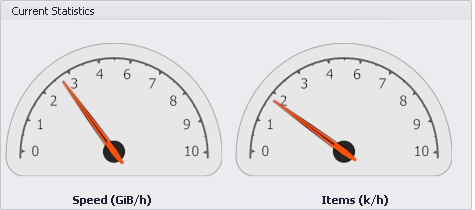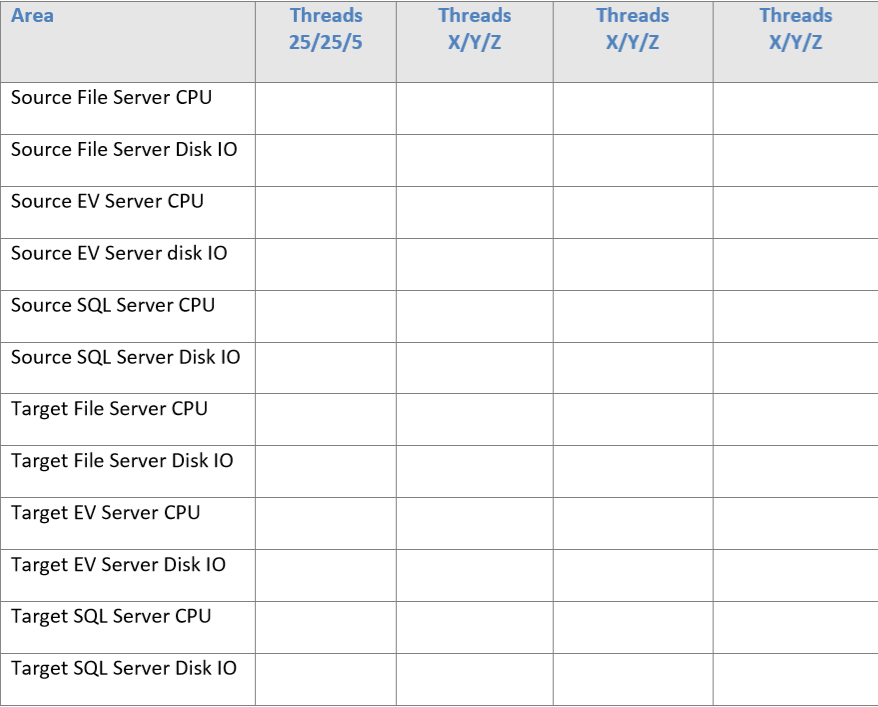Current throughput
The throughput currently being observed by FSA Migrator can be seen in the following panel:
Configuring a schedule
FSA Migrator performs a number of tasks on a schedule. The defaults for these schedules are shown below:
|
Schedule |
Default |
|---|---|
|
Normal Files Migration |
Always |
|
Archive Files Migration |
Always |
|
Folder Scanning |
Always 720 minutes between scans |
|
Archiving (after migration) |
Never |
|
Folder Creation |
Never |
|
Database Scan |
Never |
These schedules can be changed, as required.
Modifying the throughput
FSA Migrator generates a performance load on the source file servers, source Enterprise Vault system, target file servers, target Enterprise Vault system (if archiving is configured to take place following migration) and SQL Servers in each of the environments. The defaults for the number of threads, and therefore the amount of work generated by each part of FSA Migrator is shown below.
|
Area |
Default Number of Threads |
|---|---|
|
Folder Scanning |
NA |
|
Archive Files |
25 |
|
Normal Files |
25 |
|
Folder Creation |
NA |
|
Database Scan |
NA |
|
Archiving Files after Migration |
5 |
It should be remembered that during the migration of the data files the load is generated primarily on the Enterprise Vault server. The load on the source file server is minimal FSA Migrator only needs to check the placeholder exists on the source.
Factors affecting choice of thread counts
The number of threads to use for each aspect of the migration is dependent on many environmental factors such as speed of systems involved, network connectivity between environments, existing user load and so on. It is not possible to recommend a particular value or set of values, however, the following will help in determining an optimal number for the environment being worked on.
When making changes to the number of threads away from the defaults that are supplied with FSA Migrator it is important to carefully monitor all of the source and target systems to ensure that they are performing well, and that end-user operations are not being impacted by any change which has been made.
If desired, use the table below to determine the affects the changes have had on the environments.
The table should be modified to include each of the source and destination components. For example if there are three source file servers, and one target, then modify the table to show the data for three source file servers, rather than one in the example.
In order to judge the value to be recorded in the table, so that it can be compared when changes have been made, it is suggested that the average for 1 minute is used over the course of an hour. The values can be obtained by configuring Performance Monitor to capture the disk IO and CPU load at 1 minute intervals for a period of 1 hour.
For further assistance and guidance on the values to be used in a specific environment, or how to configure Performance Monitor to capture the required data, contact Quadrotech Support.


